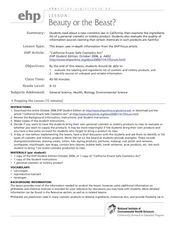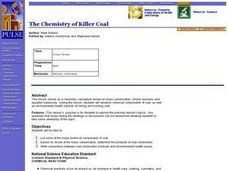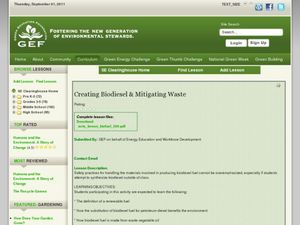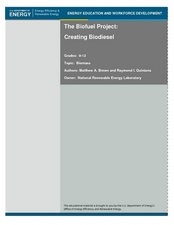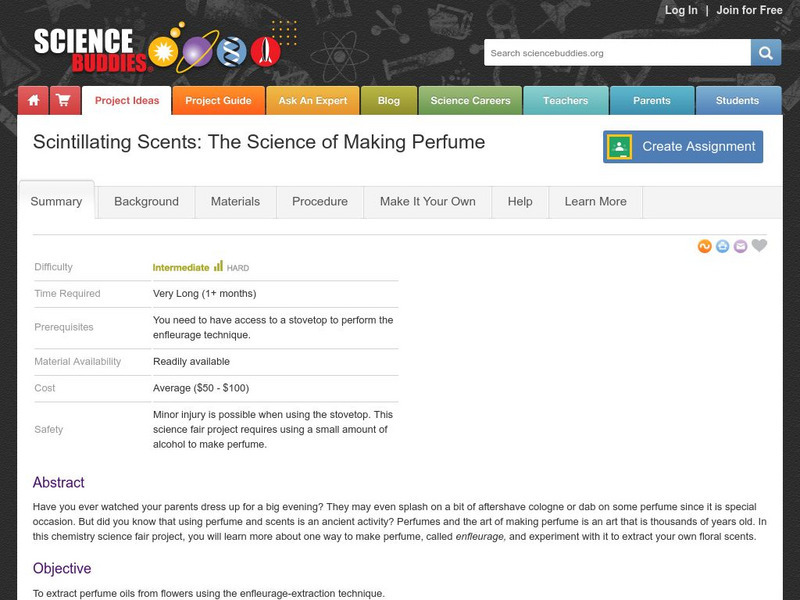Curated OER
Cosmetic Products Evaluation
Students evaluate different cosmetic products. In this chemistry lesson, students determine the physical and chemical components of their samples. They perform various test such as pH, viscosity, conductivity and formulate a conclusion...
Curated OER
Hand Lotion Analysis
Students prepare a sample of a commercial hand lotion for analysis by HPLC to determine the percent composition of two common cosmetic preservatives, methylparaben and propylparaben. They perform the analysis and the data is evaluated to...
Curated OER
Beauty or the Beast
Does the FDA really intend to protect public health? Spark a debate in your chemistry or health class by using this article, titled "Beauty or the Beast." It questions the safety of cosmetics and toiletry products, govenment regulations,...
Curated OER
The Price of Beauty: What you don't know might hurt you
Students study cosmetic safety issues and concerns raised by advocacy groups. They create a cosmetic safety brochure designed for the average consumer, to create awareness about cosmetic safety concerns.
Curated OER
The Chemistry of Coal
Students investigate the chemistry of coal. This lesson serves as a review of conservation of mass, simple reactions and equation balancing. During the lesson, students research chemical components of coal, as well as environmental...
Curated OER
The Chemistry of Killer Coal
Students research chemical components of coal, as well as environmental health impacts of mining and burning coal. They discuss conservation of mass as it relates to combustion of organic compounds.
Curated OER
Applying Scientific Method to Analyzing
Students review the scientific method and basic lab skills, and practice how chemical employees work in teams to follow the scientific method. Students learn about various job requirements and responsibilities in the chemical industry.
Curated OER
Creating Biodiesel and Mitigating Waste
Biotechnology pros produce their own biofuel using waste oil and fresh vegetable oil. They test the quality of their product using titration techniques and pH analysis. They write their observations and report their findings. Be aware...
National Institute of Open Schooling
Nomenclature and General Principles
Carbon, the base for all organic compounds, exists in nature in its purest form as graphite or diamonds. The 25th lesson in a series of 36 teaches pupils the nomenclature of organic compounds. Learners read about how to use the IUPAC...
National Institute of Open Schooling
Periodic Table and Atomic Properties
An in-depth lesson, the fourth activity in a series of 36, begins with teaching how the periodic table's arrangement came to its current design. Using this knowledge, pupils then move on to analyze the arrangement of elements to their...
Curated OER
Acid/Base Indicators
Students use plant materials as indicators of acids and bases. In this acid/base indicators lesson plan, students use boiled beets, cabbage, flowers, teas or berries that have been boiled with alcohol to test various acids and bases....
Curated OER
The Bio-fuel Project: Creating Bio-diesel
Students investigate bio-fuel. In this investigative lesson, students create bio-fuel from vegetable oil waste. Students will analyze, predict, collect and synthesize data from their experiments with bio-fuel.
Science Buddies
Science Buddies: Potions and Lotions: Lessons in Cosmetic Chemistry
Did you know that cosmetic companies employ teams of specialized chemists to develop and test each new line of make up, perfume, lotion, or soap? Here's a project that lets you be the cosmetic chemist. It shows you how to manufacture...
Science Buddies
Science Buddies: Project Ideas: Scintillating Scents: Science of Making Perfume
In this chemistry science fair project, the student will investigate the process of enfleurage, a method of extracting scents, to make and test perfume. The Science Buddies project ideas are set up consistently beginning with an...




